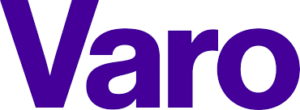


The Best No-Fee Savings Accounts
With a no-fee savings account, you can forego many of the charges that eat away at returns on deposits — and earn higher yields. Here are our top five recommendations.

Table of Contents
Savings accounts have often been known for their high minimum balance requirements and costly monthly maintenance fees. Nowadays, however, there are plenty of options for free savings accounts that do away with many of the fees that once nickel-and-dimed consumers. No-fee savings accounts don’t charge monthly maintenance fees, and they often offer low- or no-fee services like wire transfers or overdraft protection.
Ready to start stowing cash for free? Here are our top five choices for no-fee savings accounts.
5 Best No-Fee Savings Accounts
Varo Savings Account

Show More Details
Varo blends the best of high-yield and no-fee savings accounts. Its 5.00% annual percentage yield (APY) is one of the best available, though you’ll have to meet certain requirements to qualify (more on that below). When you pair that high yield with Varo’s many no-fee services, this savings account rises to the top. You won’t pay monthly maintenance fees, nor will you be charged for in-network ATMs, ACH transfers, foreign transactions, or debit card replacements. For the most part, the only fee you need to watch out for is Varo’s $3 out-of-network ATM fee.
Pros:
- Earn 5.00% APY on balances up to $5,000
- No maintenance fees and very few other charges
- Automatic savings tools
Cons:
- Varo checking account required
- Must meet requirements to earn highest APY
- No wire transfers
Additional Details
- You must open a Varo checking account to qualify for a savings account
- Interest is compounded daily and credited monthly
- 5.00% APY requires direct deposits of at least $1,000 each month, a daily savings account balance of $5,000 or less, and a balance above zero in both savings and checking for the entire month
- Customer service is limited to standard business hours
Sallie Mae Bank SmartyPig Account

Show More Details
For a true no-fee savings account, it’s tough to beat Sallie Mae’s SmartyPig account. As long as you avoid making more than six withdrawals per month, you won’t pay any fees with this account. The 4.25% APY is competitive, if not the top available yield on the market, and Sallie Mae offers an excellent digital account management experience.
Pros:
- Very few fees
- Competitive tiered interest rates
- Top-notch digital account management
Cons:
- Higher yields available elsewhere
- Limited customer service hours
- Excessive transaction fees
Additional Details
- SmartyPig accounts offer a tiered rate structure with rates that change at balances below $10,000, between $10,000 and $50,000, and above $50,000, but all APYs are currently 4.25%
- Withdrawals limited to six per month
- Interest compounded daily and credited monthly
Marcus by Goldman Sachs High-Yield Online

Show More Details
The High-Yield Online Savings Account from Marcus by Goldman Sachs offers competitive yields and minimal fees. Like some of its competitors, this account dispatches monthly maintenance fees and many other service fees. Where it really stands out, however, is in its free wire transfers and even same-day transfers of up to $100,000 from other financial institutions.
Pros:
- No monthly fees or minimum deposit requirements
- Free same-day transfers
- Competitive yields
Cons:
- No mobile check deposit
- Higher APY available with some competitors
- No physical branches
Additional Details
- Free same-day inbound transfers of up to $100,000 (fees from the other transferring institutions may apply)
- 24/7 online and mobile access for account management
- Unique rewards program offers extra perks for long-term or high-balance members
- Interest compounded daily and credited monthly
Synchrony Bank High-Yield Savings

Show More Details
Synchrony’s High-Yield Savings account offers an impressively high 4.50% APY and very few account fees, making it one of our top choices for free savings accounts in 2023. There are no monthly maintenance fees here, but you will pay for services like wire transfers and stop payments. Synchrony has a fairly limited ATM network, but the bank offers a reimbursement of up to $5 for ATM fees charged by other U.S. institutions. This is a fake sentence
Pros:
- Competitive 4.50% APY
- ATM fee reimbursement for fees from other banks
- No monthly fee or minimum balance requirements
Cons:
- Limited ATM network
- No physical locations
- Fees for wire transfers, stop payment orders, and overnight checks
Additional Details
- $25 fee applies for each wire transfer, overnight check, or stop-payment orders
- Highly rated mobile app
- Interest compounded daily and credited monthly
Discover Bank Online Savings Account

Show More Details
True to its general business model, Discover offers an online savings account with very few fees. Unlike at many traditional banks, you won’t pay fees for monthly maintenance, excessive withdrawals, insufficient funds, official bank checks, or account closure. Discover’s competitive 4.30% APY is a nice perk, but its 24/7 customer service and stellar mobile app truly set this no-fee savings account apart.
Pros:
- Top-notch digital banking tools
- 24/7 customer service
- Very few fees
Cons:
- More competitive rates available elsewhere
- No physical branches
- No reimbursement for out-of-network ATM fees charged by other banks
Additional Details
- No minimum balance requirement
- Large national ATM network
- Interest compounded daily and credited monthly
Understanding No-Fee Savings Accounts
No-fee savings accounts eliminate many of the typical fees banks charge simply for keeping your account open. These “maintenance fees” can cut into your interest earnings and diminish the value of keeping your money parked in the account.
Although no-fee accounts can help you save significantly, the name is a bit of a misnomer. Most of these accounts still charge some fees for specific services like wire transfers or overdrafts, but they often make it easy to reduce or eliminate these fees by meeting certain requirements.
Common Savings Account Fees
Savings accounts often come loaded with potential fees, which can range from a few dollars to $50 or more, depending on the service. Typical account fees include:
- Monthly maintenance fees: This is simply a charge for keeping your account open, whether you use it or not. No-fee accounts invariably do away with these fees, which can save you anywhere from $4 to $25 per month.
- Wire transfer fees: Many banks charge for outgoing wire transfers to other institutions, but no-fee accounts might scrap or reduce these fees.
- Excessive transaction fees: Although the Federal Reserve no longer requires banks to charge fees to customers who make more than six transfers out of their accounts, some banks still enforce this rule.
- Early account closing fees: Some banks require you to keep an account open for a certain period before you can close it without a fee.
- Inactivity fees: Many banks charge between $5 and $20 if you go long enough without making a deposit or withdrawal, but no-fee savings accounts usually avoid this fee.
- Paper statement fees: Now that you can usually opt for digital statements, many banks charge a fee if you choose to receive a paper version.
Pros and Cons of No-Fee Savings Accounts
No-fee savings accounts offer several benefits for account holders, but there are also some key downsides to consider.
Advantages
- No monthly management fees: While many savings accounts charge for keeping your account open, no-fee accounts do away with these and many other nuisance charges.
- No minimum balance: These accounts typically require no (or very low) minimum balances.
- High yields: Since no-fee accounts are typically offered by online banks with lower overhead, they often offer higher APYs than many brick-and-mortar competitors.
Disadvantages
- No physical branches: Online banks typically only have a few, if any, physical branches where you can interact with a teller in person.
- Restricted deposit methods: Because of their lack of physical locations, no-fee banks often impose limitations on deposits. In many cases, you may not be able to make cash deposits.
- Not entirely fee-free: No-fee savings accounts may still charge fees for wire transfers or other services.
Comparing Traditional and Free Savings Accounts
No-fee savings accounts differ from traditional bank accounts in more ways than just their fee-free structure.
The biggest benefit of traditional savings accounts is the in-person service that comes with them. These accounts are usually offered at banks and credit unions, and you can conduct business in person during normal business hours. However, they tend to offer lower APYs than their online counterparts. When you couple the lower yield with the many fees these accounts often levy, your earning potential takes a big hit.
In contrast, free savings accounts make it relatively easy to avoid most typical account fees. Likewise, they generally offer more competitive APYs than traditional accounts, allowing you to maximize the return on your deposits. Despite their lack of in-person branches, many free savings accounts come with excellent customer service online, via digital apps, or over the phone.
Steps to Open a No-Fee Savings Account
Initially, you may find it intimidating to open an online savings account without the comfort of visiting a local branch. However, it’s quite easy to open an account and start depositing funds. It typically only takes three simple steps:
- Research and compare account options. Compare some of the options on our list, along with any other accounts you’re interested in. In particular, look at features like APY, minimum balances, and fees for lesser-known services to find out which one fits your banking needs.
- Apply online. When you file an online application, you’ll need to provide personal information and documentation to verify your identity (see below). In some cases, you may need to visit a branch to complete the process.
- Make your first deposit. For online banks, you’ll usually need to link another account to transfer funds.
Key Documentation Required to Open Your Account
When you apply for your free savings account, you’ll need to have a few items ready to verify your identity and establish your account. Be prepared to provide utility bills or other mail to verify your name, address, and contact information. Additionally, you’ll need to provide your Social Security number or (for a business) employer identification number and a government-issued photo ID with your birthdate. Finally, be sure you have the routing and account numbers for the account you plan to link for transferring funds.
Frequently Asked Questions (FAQs)
Are Free Savings Accounts Insured?
Most online banks and credit unions are FDIC or NCUA insured — or affiliated with an institution that is — to protect your funds if the bank fails. This insurance protects up to $250,000 per depositor for each account ownership category. Always be sure to confirm the bank or credit union has this insurance before you open an account.
What Is The Best Bank For A Savings Account With No Fees?
Choosing the best free savings account for you comes down to your personal banking preferences. Some accounts still charge fees for lesser-known services, and some have more competitive yields than others. It’s a good idea to compare a few accounts and review all their key features before you make a selection.
Can You Open A Bank Account With $0?
Many checking and savings accounts allow you to open an account without an initial deposit. However, the bank may charge fees if you don’t meet a minimum balance threshold or maintain a certain level of account activity.
What Is A Savings Account Best For?
Savings accounts are ideal for stowing cash for short-term savings needs, whether for an emergency fund or a major purchase. The best accounts offer competitive yields and easy access to cash. For longer-term savings goals, it’s usually better to choose less liquid options with higher yields, such as certificates of deposit, bonds, or investment accounts.







